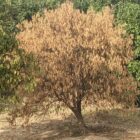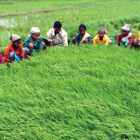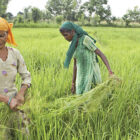Poor understanding and co-ordination between different central ministries and a complacent attitude around WTO over the last decade has caused immense suffering for the farmer.
The hullabaloo over the deemed success of the Bali meet of the World Trade Organisation (WTO) makes it clear even to the meanest intelligence that the WTO is more debated than understood. The WTO was designed, amongst other things, to stem a fall in prices but food prices have been rising for the past so many years; more so from 2007. Food importing countries, usually the developing ones, are not overly interested in reducing subsidies in developed countries because a reduction in subsidy would increase the cost of food imports.
Trade is a given need and, therefore, the requirement for a world trade organisation to facilitate it. When India initially signed the WTO agreement, it may not have been detrimental to farmer interests and it would enable exports by other sectors. India did not try to use the fine print to its advantage. A lack of understanding and co-ordination between the different ministries of the government of India and a complacent attitude over the last decade has, however, caused immense suffering.
Cash subsidies can easily be classified as blue box subsidies, which can be continued without attracting quantification requiring reduction, unlike the amber box subsidies. In 1995, the blue box subsidy was agreed to as a temporary measure but it has since become a permanent feature as it has not been debated to its logical conclusion. Blue box subsidies thus must be abolished and there should be only two categories of subsidies: green box and trade-distorting subsidies.
The developed world did not quite follow the WTO in spirit by reducing subsidies; it did so in letter only. Very cleverly, the USA continually changed much of the form in which it gave subsidies, thereby transferring them from the amber to the blue box. India must share part of the blame, instead of always blaming others. It designed subsidies without application of mind; the subsidy limits should have been quantified with penalties imposed if the limits were crossed.
The point is that if the Food Security Bill provisions had required cash delivery instead of mandated subsidised grain delivery, the country would not need to sign the four-year reprieve of the ‘peace clause’ in Bali and claim it as a victory. Bharat Krishak Samaj is of the opinion that a lot of changes are required to the WTO agreement. To begin with, not just the actual amount of subsidy should be considered as subsidy; the value of trade price distortion must also be taken into account.
Consider cotton; if a $3 billion in subsidy given to around 25,000 cotton farmers in the USA was withdrawn; farmers in the USA would stop growing cotton. This amounts to ₹80 lakh ($1,30,000) to each cotton farmer in the USA. This would reduce world cotton production by 12 per cent and, theoretically, cotton prices could rise by 100 per cent. Even after factoring in a larger number of farmers producing cotton on account of rising value of cotton, the expected price rise would be 50 per cent.
The current world production of cotton is around 26.8 million tonnes and worth $55 billion. A 50 per cent price increase would amount to $27.5 billion. That is the value of distortion and should be taken into account as USA cotton subsidies that adversely affect trade and not just $3 billion. In India, seven million farmers produce six million tonnes of cotton valued at $12.5 billion. A 50 per cent price increase would translate into $6.75 billion in additional revenue, which means nearly a whopping ₹70,000 ($1,100) to each cotton farmer in India.
Meanwhile, Indian agriculture is faced with a pathetic funding of research and even poorer outcomes vis-à-vis the investments on a substantial research network. The cover story of Farmers’ Forum (December 2013 issue) explores the agri-research phenomenon in great detail. Globally, some $50 billion a year is spent on food and farming science but more is spent on cosmetics. The global military expenditure in 2012 was $1,753 billion. Investment in agriculture is a drop in the ocean when compared to the finance available.
For the practicing farmer, the lack of research means tremendous trauma given the compulsions of climate change. To quote from personal experience, at the grassroots level, the arrival of the kohra or frost on the ground in December-January – when the nights are clear and the air cold and dry create perfect conditions for a frost attack – fills a farmer with fear. Frost damage leaves the plants scorched and brown, as if burnt, and the fruit unsaleable. Sometimes, plants simply die. In the yesteryears, the farmer would create smoke in the field at night to stop frost from forming or flood water on the field to mitigate the damage. Today, he would run afoul of environmentalists.
The Bharat Krishak Samaj has insisted that environmentally sustainable practices will be adopted by farmers at large if they are economically sustainable in the immediate term. Will research find the answers for these very real life and death issues for the Indian farmer? Will 2014 be that magical year when the Indian farmer regains his place in the priorities list of the new government in India? On that thought, here is wishing you a very happy new year.




